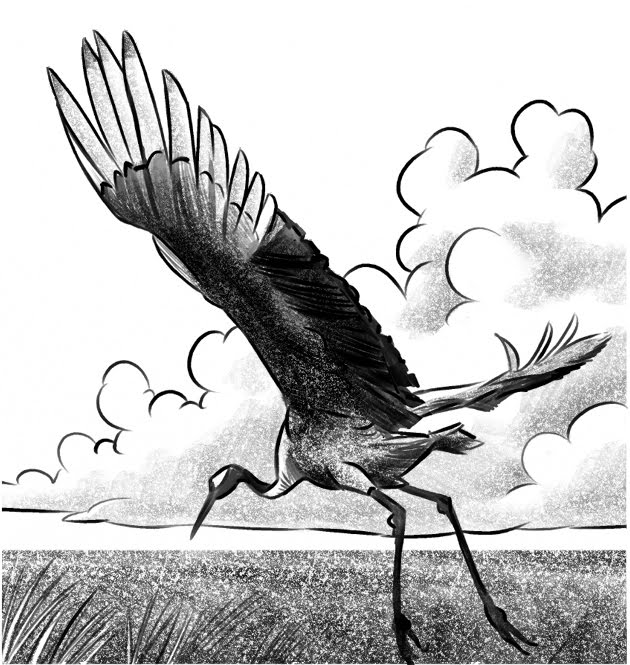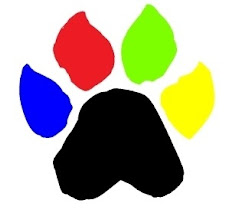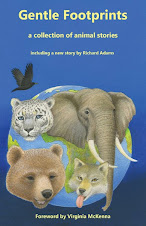 The largest mammal on the planet, African elephants are easily recognizable by their long trunk, large ears, and pillar-like legs. Their skin ranges from black to pale grey or brown in colour, they have long ivory tusks, flat forehead and back, 4 toes on front feet, 3 on hind feet. The trunk of the elephant bears 2 fingerlike lips at the tip, which are very sensitive and used to pick up food or other articles and manipulate objects.
The largest mammal on the planet, African elephants are easily recognizable by their long trunk, large ears, and pillar-like legs. Their skin ranges from black to pale grey or brown in colour, they have long ivory tusks, flat forehead and back, 4 toes on front feet, 3 on hind feet. The trunk of the elephant bears 2 fingerlike lips at the tip, which are very sensitive and used to pick up food or other articles and manipulate objects.Family Ties
 The social bonds between family members are strong. In times of danger the group will form a defensive circle, moving all the calves to the centre, the adults facing outwards. Female society is essentially matriarchal. One female is dominant, usually the eldest, with the group being composed of a few closely related adult cows and their young in a stable family unit.
The social bonds between family members are strong. In times of danger the group will form a defensive circle, moving all the calves to the centre, the adults facing outwards. Female society is essentially matriarchal. One female is dominant, usually the eldest, with the group being composed of a few closely related adult cows and their young in a stable family unit.Kenyan elephants are in danger of extinction, due to deforestation, and poaching of tusks for ivory, and body parts.
The Author
IN CHILDHOOD - I WROTE STORIES, CREATED MAGAZINES FOR MY FRIENDS AND FAMILY, AND WROTE AND PRODUCED PLAYS FOR THE NEIGHBOURHOOD. I WROTE FOR THE LOVE OF WORDS AND STORIES AND OTHER WORLDS.
IN MY TEENS - I WROTE STORIES AND POEMS ABOUT TEENAGE EMOTIONS AND SITUATIONS. I WROTE TO ANALYSE MY FEELINGS.
IN MY TWENTIES - I CONTINUED TO WRITE STORIES AND POEMS SOMETIMES SERIOUS, SOMETIMES HUMOROUS, ABOUT MY LIFE EXPERIENCES THROUGH THE UPS AND DOWNS OF BEING SINGLE AND THEN MARRIED.
IN MY THIRTIES - I WROTE MORE CONSISTENLY, AT HOME FOR LONG PERIODS WITH MY YOUNG SON, LEARNT MY CRAFT AND STARTED TO BE PUBLISHED.
IN MY FORTIES - I WROTE TO SURVIVE DIVORCE, AND AS A CHANGE FROM ACADEMIC ESSAYS FOR MY DEGREE.
IN MY FIFTIES - I TAUGHT WRITING CLASSES AND RAN WORKSHOPS AND ATTENDED EVENTS. WRITING BECAME A MORE PUBLIC AND SOCIAL EXPERIENCE.
IN MY SIXTIES - JUST! - NOW RETIRED, I HOPE TO EXPLORE NEW AVENUES IN MY WRITING. WALKING ACROSS THE FIELDS, I STILL GET IDEAS AND CHARACTERS IN MY HEAD. WORDS AND STORIES AND OTHER WORLDS. IT IS WHO I AM.
The Story
 I have always liked elephants for some reason. When I was a child my parents took me to Whipsnade Zoo, where I had a ride on one. Unknown to us, I had caught German Measles, and apparently I was very worried that I had given it to the elephant. I also had dreams that there were elephants in our living room – don’t know what Freud would make of that! So when I thought of writing about an animal, the elephant seemed the obvious choice.
I have always liked elephants for some reason. When I was a child my parents took me to Whipsnade Zoo, where I had a ride on one. Unknown to us, I had caught German Measles, and apparently I was very worried that I had given it to the elephant. I also had dreams that there were elephants in our living room – don’t know what Freud would make of that! So when I thought of writing about an animal, the elephant seemed the obvious choice.I did a lot of research for Those That are Left, because I wanted the story to be authentic. I researched facts about the way Kenyan elephants live, and how their surroundings affect them, and the danger they increasingly face, from people who kill them for their own ends. Also, I found that there have been studies of elephants emotional behaviour, which showed that they react intensely to bereavement or separation from close family. This worked in well with my idea of a young woman viewpoint character who is like a young female David Attenborough, who has suffered loss herself. At the end of the story, I found that I had learned a lot about this strong yet sensitive species that needs to be protected from danger, but allowed to live freely.






No comments:
Post a Comment